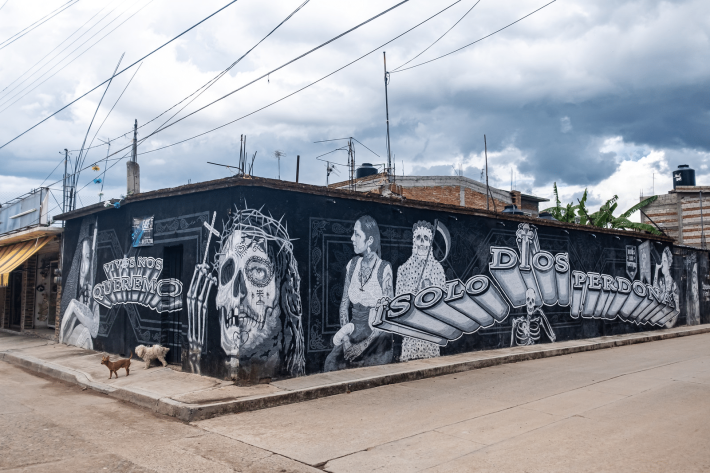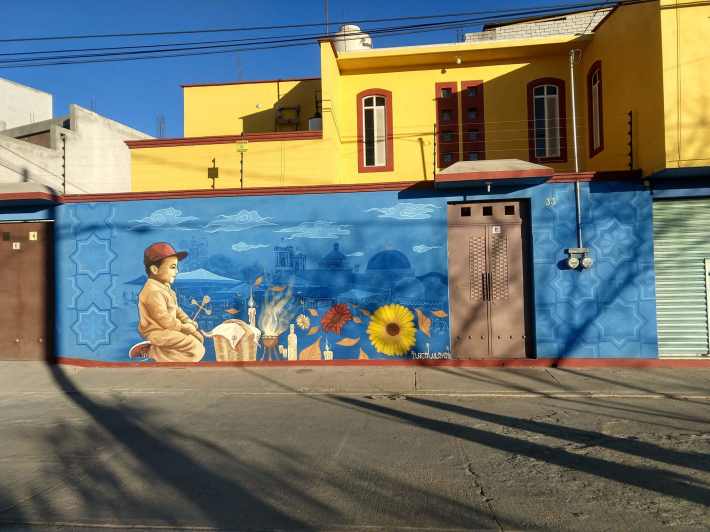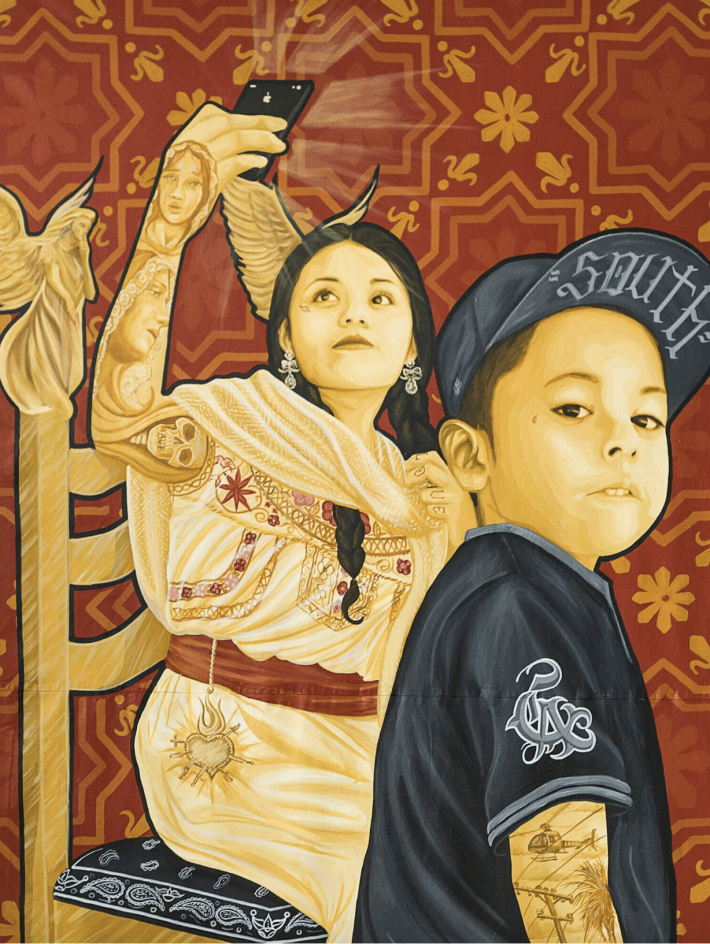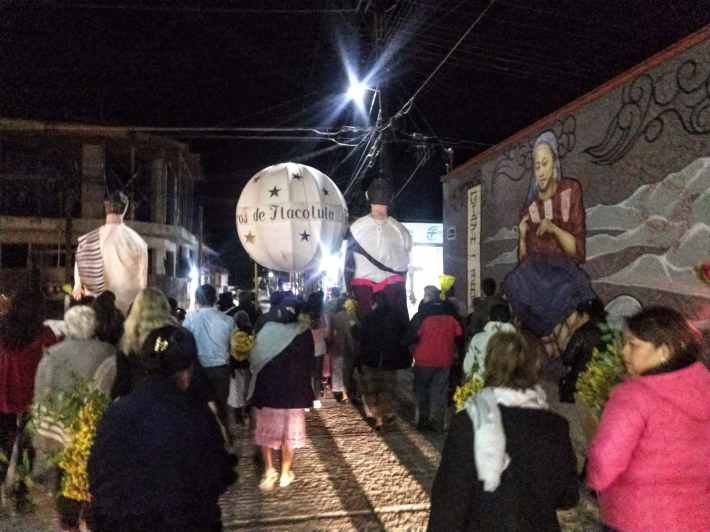[dropcap size=big]t[/dropcap]he Tlacolulokos exhibition "For the Pride of Your Hometown, the Way of the Elders, and in Memory of the Forgotten" opened on March 1st. It will be on display until December at The Museum of Latin American Art (MOLAA) in Long Beach.
This home for their art seems lightyears away from 2018, when the mural-based art collective famously had their visas revoked and confiscated by customs agents at San Francisco International Airport on Jan. 8, 2018. While the artists are still denied to the U.S., their art stands tall and strong in Long Beach.
These pieces by Oaxacan artist Dario Canal and Cosijoesa Cernas shown initially at the Los Angeles Central Library as part of “Visualizing Language PST LA: LA,” now find a new home in MOLAA's permanent collection.

Pacific Standard Time LA was a city-wide art series that took place in the summer of 2017. The summer of Latinx representation in art. After generations of relegated to staying in the back of the house in restaurants, decades of a generational divide, of separated families, language barriers, the struggle for identity, OaxaCalifornian stories had center stage for the first time in the rotunda at L.A.'s central library.

Generations of Oaxacan communities have been living, working, and setting up roots in Los Angeles since the 1940s. The migration from the Tlacolula del Valle Central, one of eight regions of Oaxaca, to West L.A. has been traced back to the bracero program (1942-1964). Being indigenous people, the Oaxacan communities, help establish build community in Santa Monica and West Los Angeles. In 2020, Zapotecos have even deeper roots in L.A. and have influenced the Koreatown and parts of West L.A. as much as the city has changed them as Zapotecan-Americans.
At MOLAA's opening night, I spoke to Dr. Xóchitl Flores-Marcial, a professor at CSUN, and the person who brought the Tlacolulokos' Art to L.A. She's a force to be reckoned, complete with her beautiful blue silk listones gathered in her trenzas on top of her head.
At first, she says that it was an attempt to represent indigenous languages, to show that Zapotec is not one single language, but rather an entire language family. Within it, there are over 40 varieties of Zapotec that could never fit on any size canvas. In the Sunday Mercado de Tlacolula, one of the oldest continuous running tianguis in Mesoamerica, it is guaranteed that you will hear several of these Zapotecan languages. In L.A., if you’re in the right restaurant at the right time, you will too. The term "dialect" (which is how many people including some speakers of these Indigenous Languages), has been used to devalue native languages and the speakers of these languages.

La profesora, like the Tlacoluloko artist and myself, are all from the same pueblo, Tlacolula de Matamoros. As reflected in the murals, Zapotecs adapted parts of their social lives to those imposed by Spaniards starting in the 16th century, blending Indigenous practices with colonial ones. The Tlacolulokos use the ornate design is the floor design of la Capilla de El Señor de Tlacolula as the backdrop to the murals. The center of town a 16th-century baroque church, with a Capilla Mortuoria, depictions of saint decapitations.
The patron saint of Tlacolula de Matamoros, El Señor de Tlacolula, has had a replica established and celebrated in the city of Santa Monica's Saint Anne church for almost three decades. Santa Anita, as it's referred to, often holds a Oaxacan mass. The hymns are different, the accompanying music is a live Banda de Viento (a large, drum-led band), and the post-church food consist of tacos al vapor, tlayudas, barbacoa, nieves oaxaqueñas, and so much more. The Zapotec community brings with it its traditions and cultural practices often never to see their homelands due to immigration status, high cost, and workload.

Migration and adaptation are continuous for our people. From indigenous origins to the colonial era to modern life in L.A., language is key to identity; layered and complex.
Dr. Flores-Marcial and the team helped bring the conversation to L.A. Theses stories would have remained in the shadows without representation and community involvement. Now in their new Long Beach home, we have been given the space to continue sharing and celebrating our cultural practices and stories, and hope to continue doing so.
OaxaCalifornia is more than mole and mezcal. It's more than attending the folkloric annual festival, La Guelaguestza, as a bucket list item. The Tlacolulokos are telling these uncelebrated and often painful stories in Tlacolula via their murals in Los Angeles.
Borders may prevent the Tlacolulokos from physically being in the country, but no wall can stop their art from entering.







